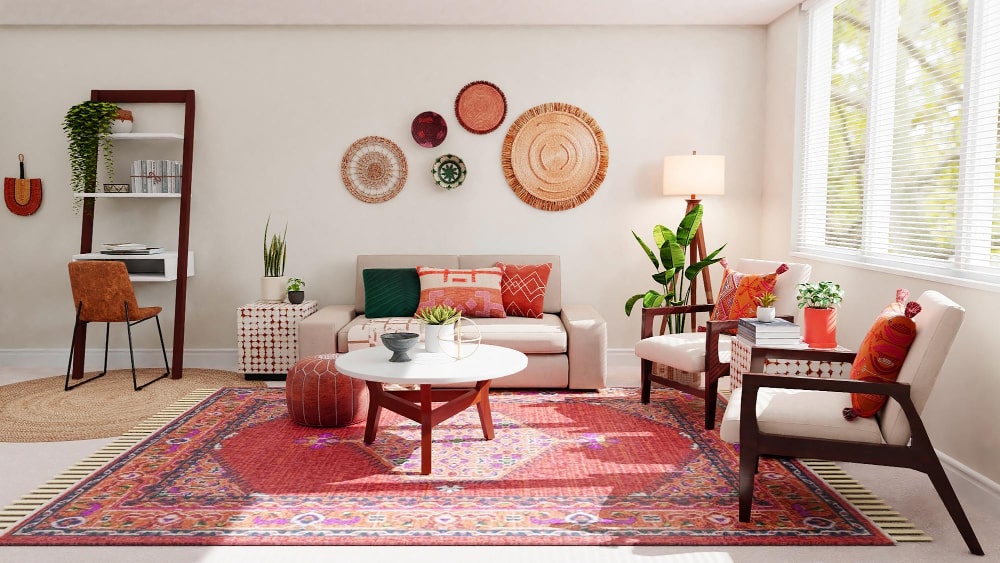Design a stunning look with expert luxury interior design.
Design a stunning look with expert luxury interior design.
Blog Article
Transform Your Home With Essential Principles of Interior Decoration and Aesthetic Appeals
By comprehending the effect of shade theory and the significance of structure and patterns, one can create areas that are not only aesthetically enticing however additionally deeply personal. Accomplishing this equilibrium includes even more than plain decoration; it includes a critical plan and a keen understanding of how each element engages within a space.
Comprehending Shade Theory
Comprehending the concepts of color theory allows designers to develop spaces that reverberate psychologically with occupants while satisfying functional needs. Each group plays an essential role in establishing consistency within a room.
The mental influence of shades is profound; warm colors such as reds and oranges evoke energy and heat, while great tones like blues and environment-friendlies advertise peace and serenity. The usage of complementary colors improves aesthetic passion, creating striking contrasts that can boost an area's appeal.
Neutral colors, on the other hand, work as a flexible backdrop, permitting various other style aspects to beam. It is necessary to take into consideration factors such as illumination and the area's objective when choosing a shade scheme, as these can change the perception of shades throughout the day.
Inevitably, a well-considered shade scheme can change a space, promoting a sense of convenience and design that lines up with the citizens' choices. Proficiency of shade concept is, therefore, a vital skill for any kind of interior designer aiming to produce unified and inviting settings.
Accomplishing Balance in Layout
Just how can designers achieve a feeling of stability in their areas? Achieving balance in design is essential to creating harmonious interiors. Developers can make use of three main kinds of equilibrium: symmetrical, unbalanced, and radial. Balanced equilibrium involves setting up components equally around a central point, cultivating a feeling of order and tranquility. This kind usually includes sets of furniture or artwork, improving aesthetic security.
Asymmetrical equilibrium, on the other hand, depends on differing aspects that still accomplish a natural appearance. This strategy enables more dynamic and casual setups, supplying passion while maintaining equilibrium. By very carefully choosing differing dimensions, shades, and structures, designers can produce an aesthetically engaging area that really feels well balanced yet energised.
Radial equilibrium highlights a central centerpiece with components radiating outside. This design is generally seen in circular designs, where furniture and design develop a cohesive surround that attracts the eye internal.
Ultimately, achieving equilibrium requires thoughtful consideration of range, percentage, and the relationships between elements. Architecture Firm. By skillfully applying these equilibrium concepts, developers can transform rooms right into settings that really feel both cosmetically pleasing and functionally harmonious, boosting the total experience for passengers
Importance of Spatial Understanding

A keen sense of spatial understanding permits developers to recognize prime focus within a space, assisting the customer's focus to vital features while keeping an overall sense of unity. It also aids in the tactical placement of illumination, which can considerably affect the perception of space and mood. Furthermore, understanding spatial relationships enables the designer to cater to the specific needs of inhabitants, ensuring that each location offers its designated function without jeopardizing appearances.
Ultimately, spatial recognition is critical for making best use of the possibility of any type of interior space. By carefully taking into consideration the interplay between measurements, layout, and feature, developers can produce environments that not just satisfy practical demands but additionally evoke a feeling of convenience and appeal, boosting the general living experience.
Incorporating Appearance and Patterns
Embracing a varied variety of textures and patterns can substantially improve the aesthetic and responsive charm of an indoor space. The critical use different products-- such as wood, metal, material, and stone-- develops deepness and rate of interest, making a space feel much more welcoming and vibrant. Incorporating smooth surface areas with harsh appearances can establish an equilibrium that attracts the eye and involves the senses.
When integrating patterns, take into consideration both scale and repetition. Big patterns can work as focal factors, while smaller, subtle layouts can enhance various other aspects without frustrating the space. Layering patterns, such as pairing flower cushions with striped throws, adds anchor intricacy and a sense of consistency if carried out thoughtfully.
It is additionally crucial to preserve a natural color palette, making certain that appearances and patterns work together as opposed to compete for attention. By choosing a few essential textures and patterns, you can create a combined visual that shows your individual style while improving the total ambiance of the space. Inevitably, the cautious unification of these elements can transform an ordinary space into a sophisticated setting rich look at here with character and warmth.
Personalizing Your Room
Creating a space that mirrors your individuality is crucial to accomplishing an absolutely inviting setting. Customization in interior decoration allows you to infuse your one-of-a-kind design and interests right into your home, transforming it from a mere shelter into a haven that talks to who you are. Begin by selecting a color combination that resonates with your emotions-- vibrant colors can stimulate, while soft tones supply tranquility.
Integrate art work and style that reflect your passions, whether it be travel, nature, or abstract concepts. Presenting personal collections, such as publications, photos, or mementos, can stimulate treasured memories and develop prime focus within a room. In addition, take into consideration personalizing functional items, like upholstered furniture, to line up with your aesthetic choices.

Conclusion
Finally, the transformation of a home through the important principles of indoor design and visual appeal necessitates a detailed understanding of shade concept, balance, spatial recognition, texture, Click Here and customization. Each component adds considerably to producing a harmonious and functional living setting - miami luxury interior design. By attentively integrating these principles, individuals can boost the aesthetic allure and psychological vibration of their rooms, ultimately promoting a home that reflects one-of-a-kind identities while giving convenience and practicality
Report this page